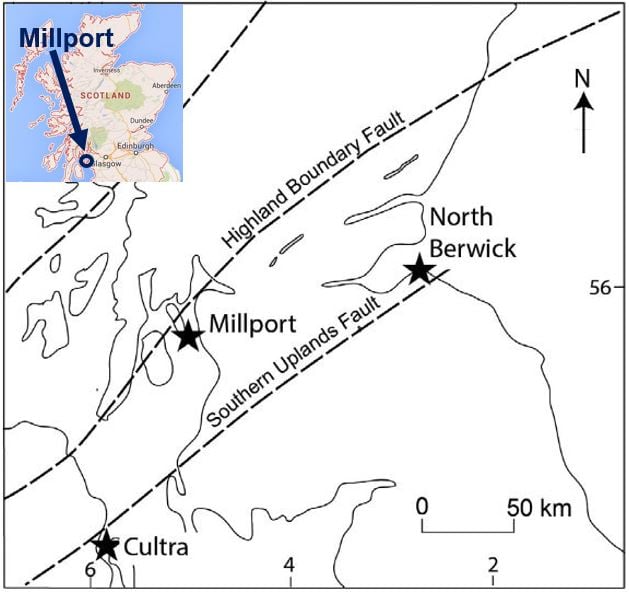Does the discovery of gold in rocks on the beach at Millport, a holiday resort on the Isle of Great Cumbrae, mean Scotland is about to have a Californian-style gold rush? According to a team of scientists from the University of Aberdeen, the find does not herald a rush northward by gold-diggers seeking to make a fortune.
The geologists do say, however, that the find could mean there is more gold elsewhere in the region, and possibly on a much bigger scale.
Gold is generally found in deposits in veins deep in the Earth’s crust after water has flowed through cracks at very high temperature.
 There’s gold on them thar beaches! Millport is the only town on the island of Great Cumbrae in the Firth of Clyde off the coast of North Ayrshire, eastern Scotland. (Image: flickr.com)
There’s gold on them thar beaches! Millport is the only town on the island of Great Cumbrae in the Firth of Clyde off the coast of North Ayrshire, eastern Scotland. (Image: flickr.com)
Tiny concentrations of gold found in rocks
Professor John Parnell, who works at the University of Aberdeen’s School of Geosciences and colleagues explained in the Journal of the Geological Society (citation below) that an analysis of red sandstone rock revealed minute concentrations of gold.
Lead author, Prof. Parnell, Chair in Geology & Petroleum Geology, said:
“In undertaking this research I was initially interested in analysing little structures found within common red sandstone rocks which we took from the beach at Millport, which to the naked eye appear as tiny black spots.”
“By analysing the structures using a high-powered microscope, we discovered that they contain concentrations of gold, which is unusual because gold normally tends to be concentrated by hot waters rising up through cracks in the Earth.”
“In this this case the gold has been formed and concentrated in a completely different environment, which raises the possibility of similar structures appearing within red sandstone elsewhere but on much bigger scale.”
 Map of northern Britain and Ireland showing locations of red bed-hosted samples examined in this latest study. (Image: jgs.lyellcollection.org)
Map of northern Britain and Ireland showing locations of red bed-hosted samples examined in this latest study. (Image: jgs.lyellcollection.org)
Gold can be found in surprising places
The findings of this latest study add to a growing awareness that gold concentrations are present in red sandstone, and possibly in other sedimentary rock too, otherwise known as ‘red beds’.
Prof. Parnell added:
“Some studies have been carried out in England where concentrations of gold have also been found in red sandstone, but not to the consistency that we find within the Millport rocks.”
“So while there is certainly no prospect of a modern-day ‘gold rush’ in Millport this analysis is helping us to understand unusual circumstances where gold can be formed, which in the future may even lead to discoveries that are commercially viable.”
A gold rush occurs when word gets out that somebody found gold and many people come to that area aiming to get rich.
Gold not linked to high temperatures
The scientists explained that studies of rock sample showed particles of native gold up to 10 µm size (µm = micrometre, one millionth of a metre), typically with less than 15 wt% silver.
Their concentrations suggest the gold was concentrated during diagenesis (the physical and chemical changes occurring during the conversion of sediment to sedimentary rock), in rocks that had not experienced regional temperatures in excess of 100°C.
“These occurrences add to other evidence of a role for red beds in the genesis of gold mineralization,” they wrote.
Citation: “Gold in Devono-Carboniferous red beds of northern Britain,” John Parnell1, John Still, Samuel Spinks and David Bellis. Journal of the Geological Society. December 2015. DOI: 10.1144/jgs2015-115.
Video – Millport Isle of Cumbrae
This is a short video taken by Tony Allen, who went to Millport on a daytrip.

